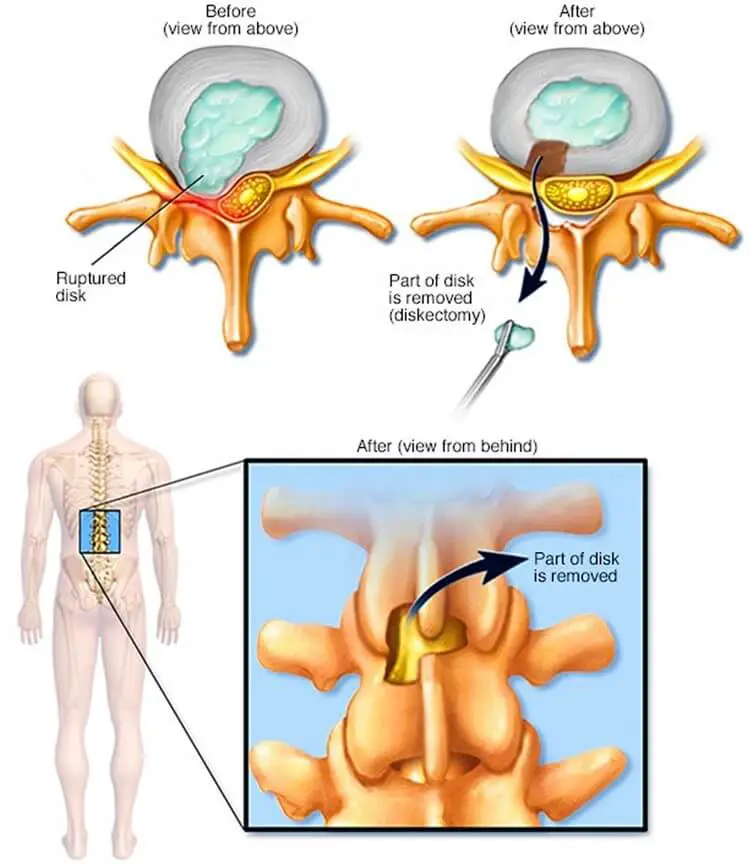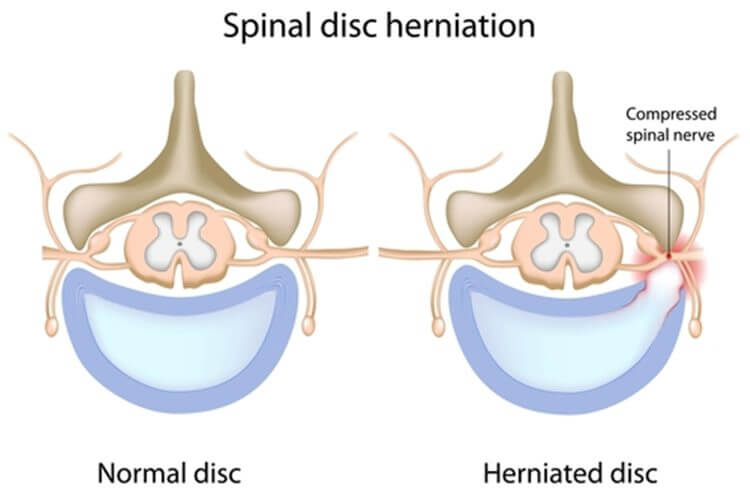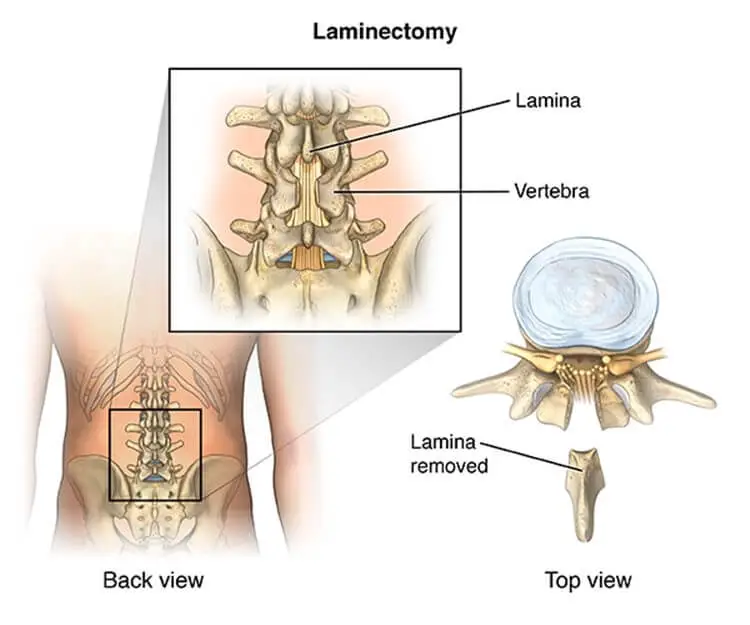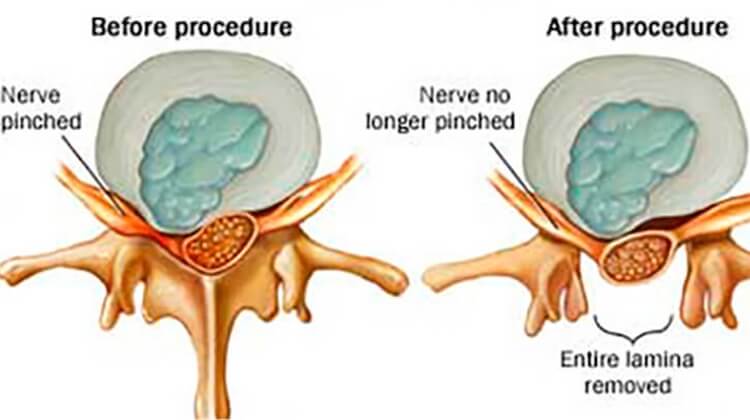What is the major difference between Discectomy and Laminectomy?
Are you confused about whether you need to have a Discectomy or Laminectomy? Are your pain and weakness so severe that you have no time to give it a thought? Worry no more!
In this article, we will cover the two processes in detail. Plus, you will get to know the difference between Discectomy and Laminectomy in depth.
In the past when there was very little research, the surgeon used to perform laminectomy only, even for a herniated disc. But thanks to advancing studies, the process of discectomy is now available to remove the bulging disc without taking out the bony lamina.
Now Let’s dive into the details!
Discectomy Vs Laminectomy
An easy way to remember the difference between Discectomy and Laminectomy is to know the source of injury.
For instance, if you have a bulging disc pressing on the nearby nerves causing pain, the surgeon will extract the disc only.
But if the Vertebral lamina is involved as well, laminectomy is performed. Sometimes, discectomies are performed along with laminectomy before you have spinal fusion surgery.
Discectomy

As the name implies, Discectomy is the removal of abnormal intervertebral discs. If you look at a normal spine, you will see vertebral bones stacked upon each other. And in between these bones lie the discs acting as shock absorbers.
These discs have a very important role in preventing injuries from any sudden movement. Now, unfortunately, due to any trauma to the spine, these discs can get damaged.
As a result of which you can get a bulging disc, which at times ruptures causing herniation. Mostly, the surgeons perform discectomy when there is extensive involvement of the limbs.

Following are a few conditions in which your surgeon would recommend you to have a discectomy:
- Difficulty in walking or standing
- Severe pain radiating to the extremities
- Extreme muscle weakness after back pain
- Or if no other treatment was successful, discectomy is the last choice.
However, if the symptoms are mild to moderate, you can perform these safe exercises for a bulging disc to recover faster.
What Is The Procedure Of Discectomy?
Your surgeon would follow the following steps to remove the bulging or prolapsed disc from the spine.
- First, general anesthesia is given to keep the patient in a coma-like state.
- The surgeon carefully examines the site to make an incision.
- Once sure of the site, the surgeon first removes a part of bone and ligaments to assess the compressed nerve.
- After moving the affected nerve out of the way, the bulging disc is fairly visible.
- Now the last step is to extract this bulging disc and close the suture with utmost care.
There is another similar procedure to remove the bulging discs known as microdiscectomy.
The steps to perform this surgery are similar to discectomy, only that the surgeons use a small microscope to make a very small incision as compared to discectomy.
Laminectomy

To understand the concept of Laminectomy, you must first know what Lamina means. In simple words, the lamina is the part of the vertebral bone covering the posterior side of the spine.
Normally, there is enough space in the spinal cord to help in the movement of the spine. However, anything that is foreign to the spine will destabilize the back resulting in severe pain and reduced mobility.
Sometimes the doctors perform spinal fusion surgery to extract the spinal fluid. This will then help in stabilizing the spine while reducing back pain.
But if an elderly person or an arthritic patient develops bony outgrowths, the surgeons have to surgically remove these bony parts, a process known as Laminectomy.
But why is there a need to remove these bony outpouchings anyway?
Well, they have to be removed because the bony spurs narrow the spinal cavity compressing the surrounding nerve roots. This will then cause pain, numbness, tingling in the leg or arm, depending on the site affected.
In severe cases, loss of bladder control or irregular bowel movements has also been observed. Now a surgical intervention is necessary to widen the cavity and improve the movement and pain in the spine.
What Is The Procedure Of Laminectomy?

Following are the steps to remove the bony spurs from joints. Most of them are similar to discectomy.
However, in laminectomy, the surgeons remove a major part of the bone to assess the spinal cavity, unlike discectomy.
- An anesthesiologist first gives anesthesia to the patient to prepare him for surgery.
- After that, the Surgeon examines the site and size of the incision.
- If the bony growth is visible after removing the Lamina from one side there is no need for another incision on the opposite side.
- Sometimes, the doctors make a big cut to remove both the lamina plus posterior spinal process to visualize the bony outgrowth. And later remove it.
- If there is herniation then a discectomy is also done at the same time.
- After the surgery, the surgeons carefully close the suture.
Note: Laminotomy is different from a laminectomy. Know more about the difference between laminotomy and laminectomy.
FAQs
Usually, your surgeon will perform laminectomy if:
▶ You have severe back pain followed by muscle weakness.
▶ There is a failure in the improvement of symptoms, or if they are worsening over time.
▶ You have neurologic symptoms like uncontrolled bowel habits, loss of bladder control.
Well, the recovery after a laminectomy is mostly concerned with the wound healing rather than the bone itself. Hence, the bone does not grow back after the surgery.
Conclusion
In short, if you are feeling pain in the lumbar region, numbness in the limbs, or tingling sensations you are most likely to have a bulging or herniated disc. And a surgical intervention is required to remove the defective disc (discectomy).
On the other hand, if you have bony spurs with or without the disc involvement, your surgeon would remove the extra piece of bone. This removal of bony spurs is known as Laminectomy.
